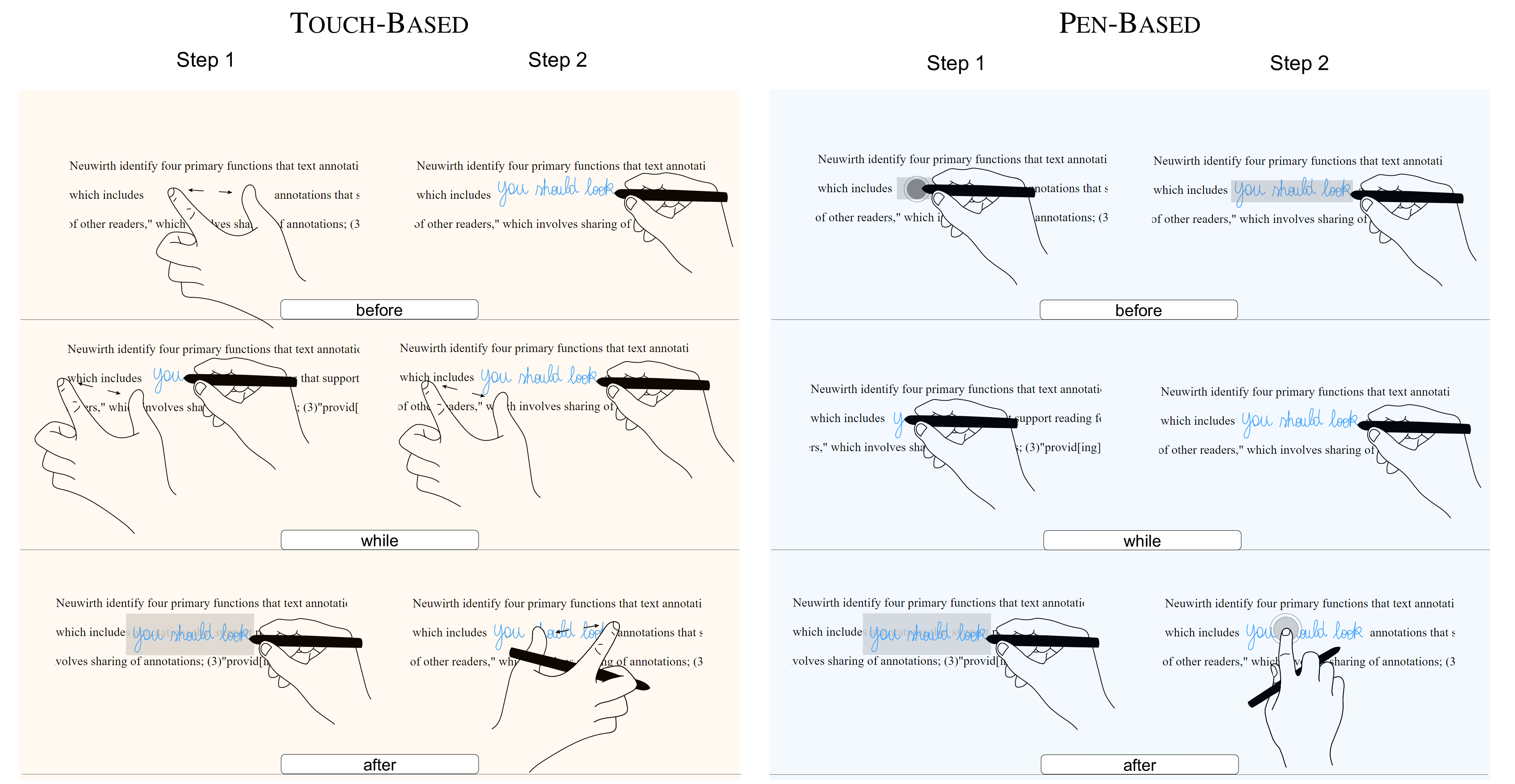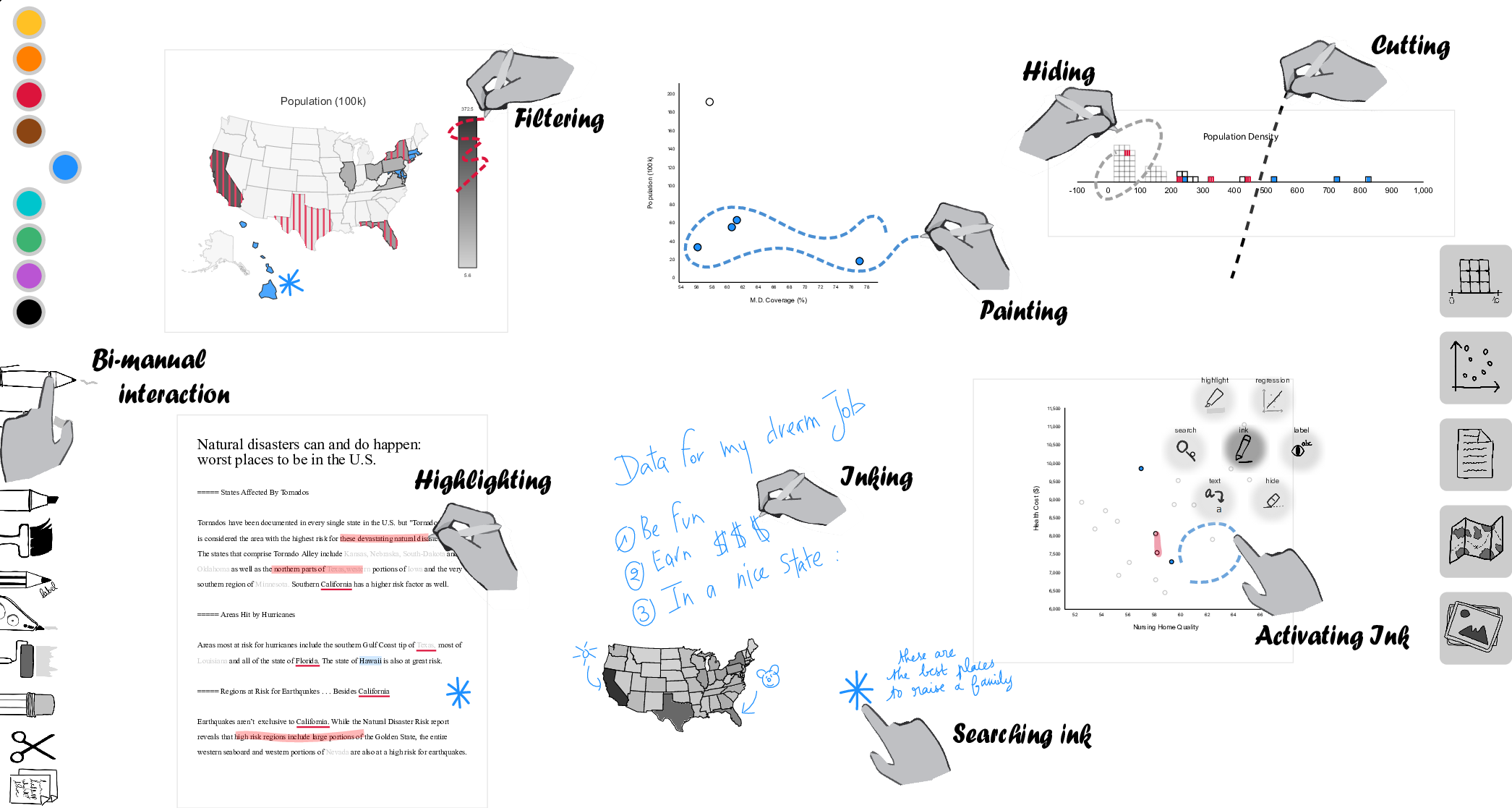Section:
New Results
Digital Ink and Data Manipulation
Figure
3. In the SpaceInk design space, both touch-based and pen-based techniques let users specify the strategy for creating white space at different moments: either before, while, or after annotating. With touch-based techniques, users are free to both gesture and write with a single hand (as illustrated in the after condition) or with two hands (as illustrated in the before condition).
|
|
We investigated how pen and touch could be best combined to facilitate the digital annotation of documents. When editing or reviewing a document, people directly overlay ink marks on content. For instance, they underline words, or circle elements in a figure. These overlay marks often accompany in-context annotations in the form of handwritten footnotes and marginalia. People tend to put annotations close to the content that elicited them, but have to compose with the often-limited whitespace. Based on these observations, we explored a design space – which we call SpaceInk (UIST 2019 [9]) – of pen+touch techniques that make room for in-context annotations by dynamically reflowing documents. We identified representative techniques in this design space, spanning both new ones and existing ones, as illustrated in Figure 3. We evaluated them in a user study. The results of this study then informed the design of a prototype system which lets users concentrate on capturing fleeting thoughts, streamlining the overall annotation process by enabling the fluid inverleaving of space-making gestures with freeform ink.
Figure
4. ActiveInk, a collaboration with Microsoft Research, affords smooth transition between using a digital pen for high-precision selections of heterogeneous data coming from multiple sources, and for externalizing thinking via notes and annotations. Ink strokes are leveraged to perform operations on underlying data.
|
|
Together with colleagues from the EPIC team at Microsoft Research (see Section 9.3.2.1), we also investigated the potential of digital inking for exploring heterogeneous datasets and trying to make sense of them. During sensemaking, people annotate insights: underlining sentences in a document or circling regions on a map. They jot down their hypotheses: drawing correlation lines on scatterplots or creating personal legends to track patterns. Based on these observations, we designed ActiveInk (CHI 2019 [22]), a system enabling people to seamlessly transition between exploring data and externalizing their thoughts using pen and touch as input channels. ActiveInk, illustrated in Figure 4, enables the natural use of pen for active reading behaviors, while supporting analytic actions by activating any of these ink strokes. Through a qualitative study with eight participants, we observed active reading behaviors during data exploration and design principles to support sensemaking.




